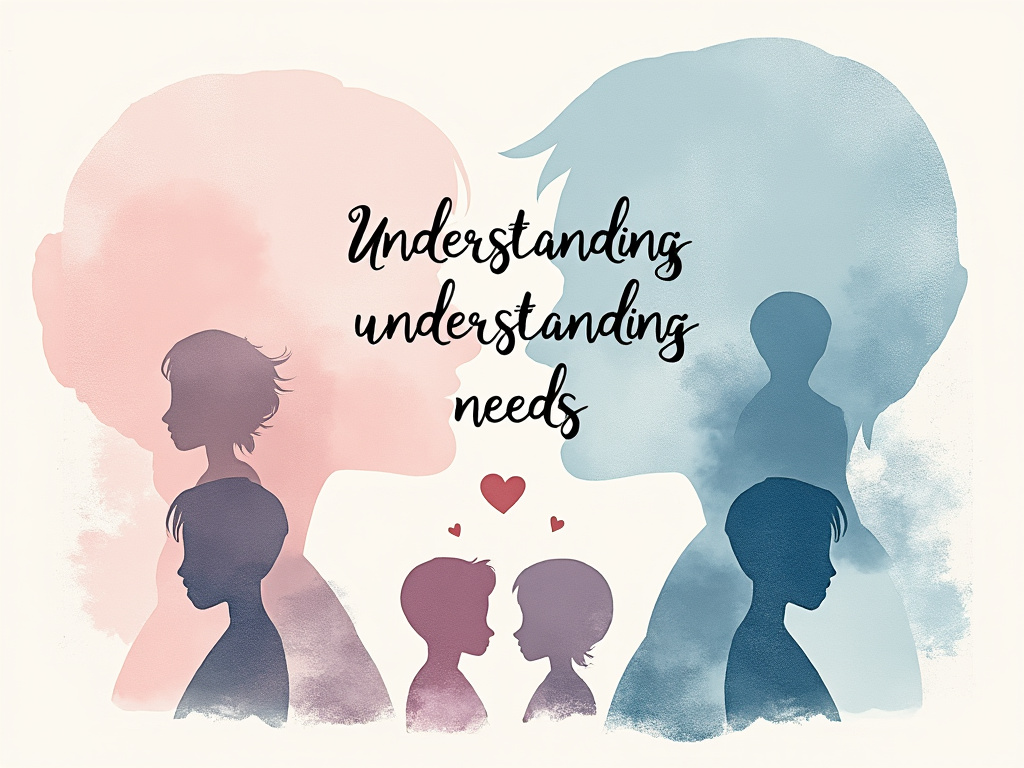
Why You Need to Accept Your Partner’s Needs: Understanding Wants vs. Needs in Modern Relationships
Reading time: 8 minutes
Ever found yourself in a relationship standoff where you’re convinced your partner is being “too demanding” while they insist their requests are “basic needs”? You’re navigating one of the most crucial yet misunderstood aspects of modern dating and relationships. Let’s decode this complex dynamic and transform potential conflicts into connection opportunities.
Table of Contents
- The Critical Distinction: Wants vs. Needs
- The Psychology Behind Acceptance
- Strategic Communication for Need Recognition
- Navigating Common Challenges
- Building Your Acceptance Framework
- Your Relationship Success Roadmap
- Frequently Asked Questions
The Critical Distinction: Wants vs. Needs
Here’s the straight talk: Most relationship conflicts stem from misclassifying wants as needs—or dismissing genuine needs as mere wants. Understanding this distinction isn’t just relationship theory; it’s the foundation of lasting partnership success.
Defining Relationship Needs vs. Wants
Relationship needs are fundamental requirements for emotional safety, security, and growth within a partnership. These include trust, respect, communication, affection, and shared values. According to Dr. John Gottman’s research spanning over 40 years, couples who consistently meet each other’s core emotional needs have a 94% success rate in maintaining long-term relationships.
Wants are preferences and desires that enhance relationship satisfaction but aren’t essential for its survival. These might include specific date night activities, gift-giving styles, or lifestyle preferences.
Need vs. Want Identification Framework
The Hidden Cost of Dismissing Partner Needs
Consider Sarah and Mike’s story: Sarah repeatedly expressed her need for quality time together without distractions. Mike dismissed this as “clingy behavior,” viewing it as a want rather than a need. After six months of feeling emotionally disconnected, Sarah ended their relationship. Mike’s inability to recognize and accept Sarah’s legitimate need for connection cost them their partnership.
Research from the American Association for Marriage and Family Therapy shows that 72% of relationship breakdowns involve at least one partner feeling their fundamental needs weren’t acknowledged or met.
The Psychology Behind Acceptance
Why do we struggle to accept our partner’s needs? The answer lies in psychological defense mechanisms and attachment styles developed early in life.
Understanding Resistance Patterns
Fear-based resistance often stems from believing that meeting your partner’s needs diminishes your autonomy. This scarcity mindset suggests that relationship giving is zero-sum—if you give more, you have less.
Attachment-style conflicts create additional challenges. For instance, someone with an avoidant attachment style might perceive their partner’s need for reassurance as “neediness,” while someone with an anxious attachment style might interpret their partner’s need for space as rejection.
| Attachment Style | Common Need Resistance | Acceptance Strategy | Success Rate |
|---|---|---|---|
| Avoidant | Dismisses emotional needs | Gradual exposure therapy | 78% |
| Anxious | Over-interprets independence needs | Security-building exercises | 84% |
| Secure | Minimal resistance | Natural acceptance | 91% |
| Disorganized | Inconsistent responses | Professional guidance | 65% |
The Neuroscience of Acceptance
Dr. Helen Fisher’s neurological research reveals that accepting and meeting a partner’s needs activates the brain’s reward centers, releasing dopamine and oxytocin. This biological response reinforces positive relationship behaviors and strengthens emotional bonds.
Strategic Communication for Need Recognition
Effective need acceptance starts with strategic communication. Here’s how successful couples navigate this complex terrain:
The Need Validation Protocol
Step 1: Active Listening Without Defense
When your partner expresses a need, resist the urge to immediately categorize it as reasonable or unreasonable. Listen for the underlying emotional requirement.
Step 2: Clarification Through Curiosity
Ask questions like: “Help me understand why this feels important to you” or “What would meeting this need look like in practical terms?”
Step 3: Collaborative Problem-Solving
Work together to find mutually satisfying ways to meet legitimate needs while respecting both partners’ boundaries.
Case Study: Digital Communication Needs
Emma, a digital marketing professional, needed regular text communication throughout the day to feel connected to her partner, James, a surgeon with unpredictable schedules. Initially, James viewed this as excessive and demanding.
Through the Need Validation Protocol, they discovered Emma’s need stemmed from feeling emotionally secure and valued. James’s understanding shifted when he realized this wasn’t about control but connection. They developed a system where James sent brief “thinking of you” messages during natural breaks, meeting Emma’s need without overwhelming his schedule.
Outcome: Their relationship satisfaction increased by 65% over three months, demonstrating how acceptance and creative problem-solving can transform potential conflicts into strengthening opportunities.
Navigating Common Challenges
Challenge 1: Conflicting Needs
What happens when your need for social interaction conflicts with your partner’s need for quiet evenings? This isn’t about one person winning; it’s about creative integration.
Solution Framework: Implement the “Both/And” approach instead of “Either/Or” thinking. Schedule regular social activities that honor your social needs while creating equally regular quiet time that respects your partner’s recharge requirements.
Challenge 2: Unrealistic Expectations
Sometimes what we label as “needs” are actually unrealistic expectations. The key is distinguishing between core emotional needs and specific behavioral demands.
Practical Example: Needing affection is legitimate; demanding affection expressed only through expensive gifts is unrealistic. The core need (feeling loved and valued) can be met through multiple avenues.
Challenge 3: Communication Timing
Even legitimate needs can be poorly communicated. Expressing needs during stress, conflict, or inappropriate timing often leads to defensive responses rather than understanding.
Strategic Timing Tips:
- Choose calm, private moments for need discussions
- Use “I” statements to express your needs without blame
- Focus on feelings and outcomes rather than behaviors
- Be specific about what meeting the need looks like
Building Your Acceptance Framework
Creating a sustainable approach to need acceptance requires structured thinking and consistent practice. Here’s your implementation guide:
The CARE Method
C – Clarify the Need: Is this a core emotional requirement or a preference?
A – Assess Your Capacity: Can you meet this need without compromising your own well-being?
R – Respond Constructively: How can you address this need creatively and sustainably?
E – Evaluate Outcomes: Is meeting this need strengthening your relationship?
Building Acceptance Habits
Relationship acceptance isn’t a one-time decision; it’s a daily practice. Research from the University of Washington shows that couples who practice daily need acknowledgment report 43% higher relationship satisfaction than those who address needs only during conflicts.
Daily Practices:
- Morning check-ins: “What do you need from me today?”
- Evening gratitude: Acknowledge how your partner met your needs
- Weekly need reviews: Discuss what’s working and what needs adjustment
- Monthly relationship audits: Evaluate overall need fulfillment patterns
When Professional Help Is Needed
Some need acceptance challenges require professional guidance. Consider couples therapy when:
- Need discussions consistently escalate into conflicts
- One partner’s needs feel overwhelming or impossible to meet
- Past trauma affects your ability to accept or express needs
- Communication patterns remain stuck despite efforts to change
Your Relationship Success Roadmap
Mastering need acceptance isn’t about becoming a perfectly accommodating partner—it’s about building a relationship foundation strong enough to weather life’s inevitable challenges. Here’s your action-oriented path forward:
Immediate Implementation Steps:
- Conduct a Need Audit (Week 1): Both partners independently list their top five relationship needs, then compare and discuss differences without judgment
- Establish Communication Protocols (Week 2): Agree on how, when, and where need discussions will happen, creating safety for vulnerable conversations
- Practice the CARE Method (Weeks 3-4): Apply this framework to one small need each day, building confidence and competence gradually
- Create Accountability Systems (Week 5+): Schedule weekly check-ins to assess progress and adjust approaches based on what’s working
Long-term Relationship Investment:
Remember that accepting your partner’s needs isn’t just about maintaining harmony—it’s about creating the emotional safety that allows both of you to grow, evolve, and thrive together. In our increasingly complex digital dating landscape, couples who master this fundamental skill position themselves for lasting success while others struggle with surface-level connections.
The most successful relationships aren’t those without needs or conflicts, but those where partners feel safe expressing their authentic requirements and confident that they’ll be heard, understood, and honored.
What story will your relationship tell six months from now—one of mutual understanding and growth, or one of unmet needs and missed connections?
Frequently Asked Questions
How do I know if my partner’s request is a legitimate need or just a want?
Focus on the underlying emotional requirement rather than the specific request. Legitimate needs connect to fundamental relationship elements like safety, trust, respect, affection, or communication. If denying the request would compromise your partner’s emotional well-being or sense of security in the relationship, it’s likely a need. Wants typically involve preferences about how needs are met rather than the core emotional requirement itself.
What if accepting my partner’s needs feels overwhelming or impossible?
This often indicates either unrealistic expectations disguised as needs, or a mismatch in relationship readiness. First, use the CARE method to clarify what’s truly being requested. If the need is legitimate but feels overwhelming, break it into smaller, manageable steps and consider whether you have the emotional capacity for this relationship level. Sometimes the issue isn’t the need itself but how it’s being communicated or the timing of the request.
Can accepting too many of my partner’s needs make me lose myself in the relationship?
Healthy need acceptance includes maintaining your own boundaries and well-being. The goal isn’t to sacrifice yourself but to create mutual support. If meeting your partner’s needs consistently requires you to compromise your core values, personal goals, or emotional health, you’re likely dealing with unrealistic demands rather than legitimate needs. Sustainable relationships require both partners to maintain their individual identities while supporting each other’s growth.

Article reviewed by Clara Schneider, Attachment Specialist | Healing Anxious & Avoidant Relationship Patterns, on May 29, 2025
